Ben Angelo, a tall, slender, man from Kalamazoo, Michigan, is the lead roaster at Stumptown Coffee’s roasting facility in Los Angeles, California. His extensive proficiency and mastery in coffee has led him to become a part of the Roaster’s Guild of America, and a lead instructor at the Specialty Coffee Association of America.
There is no doubt that coffee runs deep in his veins, right down to the marrow of his bones.
I stand before the largest Probat roasting machine I’ve ever seen in LA, with a drum capable of roasting 132 pounds of raw coffee beans simultaneously. This particular roasting facility services markets south of San Francisco and the Southwest, such as Texas and Arizona. Behind me, large windows lead into Stumptown’s cafe where the usual hustle and bustle of the well-dressed crowd congregate over espresso, cold-brew coffee on tap, and my favorite: Stumptown’s vanilla latte.
Life & Thyme photographer Melissa Ryan and I are about to be walked through Ben’s roasting process in order to gain a bit of insight about what makes a cup of Stumptown coffee so consistent and high quality.
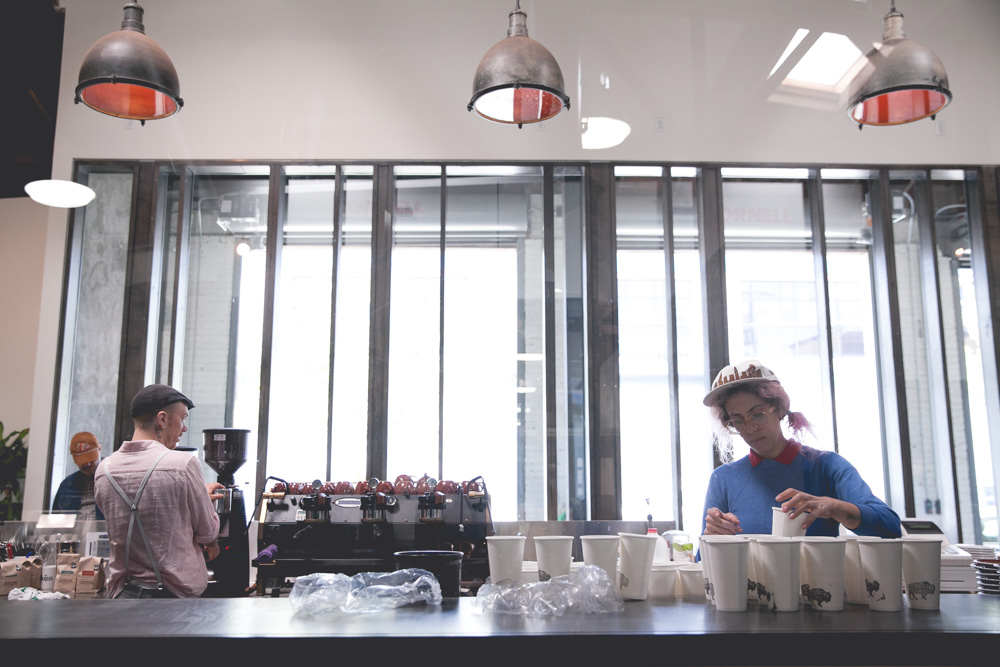
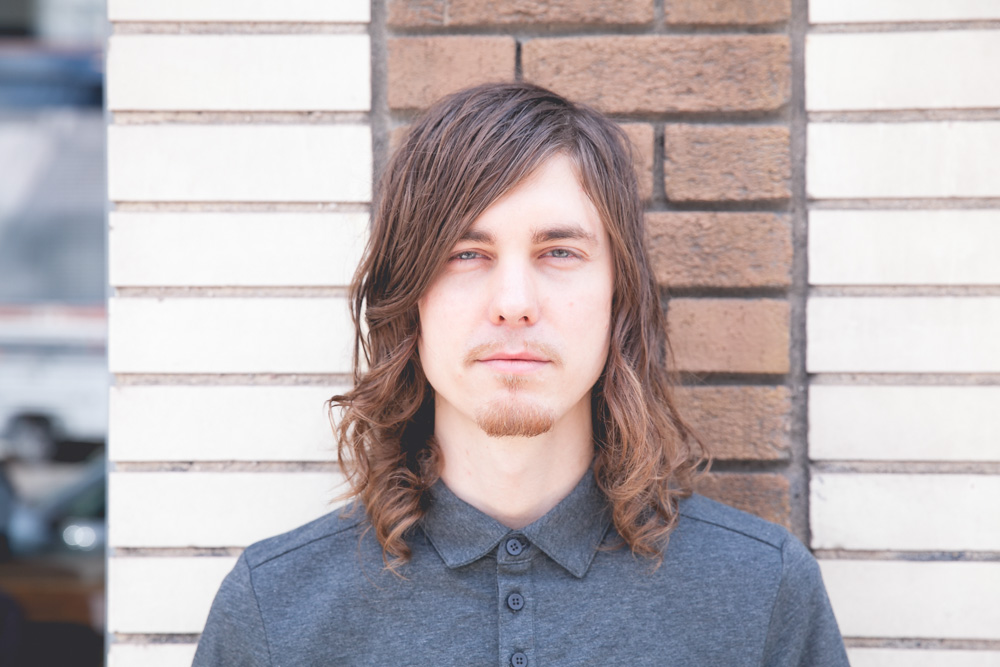
Walk us through the roasting process.
We scoop out the coffee into a bucket sitting on a scale so we know how much coffee we’re putting in. Then, we’ll dump it into the loader. This is a brand new machine. All of the machines we use at our other roasteries are refurbished vintage machines. The earliest one might even be from the ‘50s. Probat machines are amazing, German-engineered machines—they’re really not going to die and continue to keep working awesome.
I’ll have this machine on and warming up—you want it completely warm, you don’t want any hot or cold spots. So we’ll leave it warming up for about an hour before we roast coffee. I’ll press a button to turn on the vacuum to bring the coffee over and warm it to the temperature for that coffee. For a 66 pound batch, I would do maybe maybe 400 degrees. I’ll adjust the flame during that roast. When I first put it in, the drum is pretty warm, that mass of beans is pretty cold. It will be like 400 degrees in here and then you’ll see it drop down to 250 because the bean mass is absorbing the heat.
I can get super nerdy on this. If I go really, really far out into the science, bring me back.
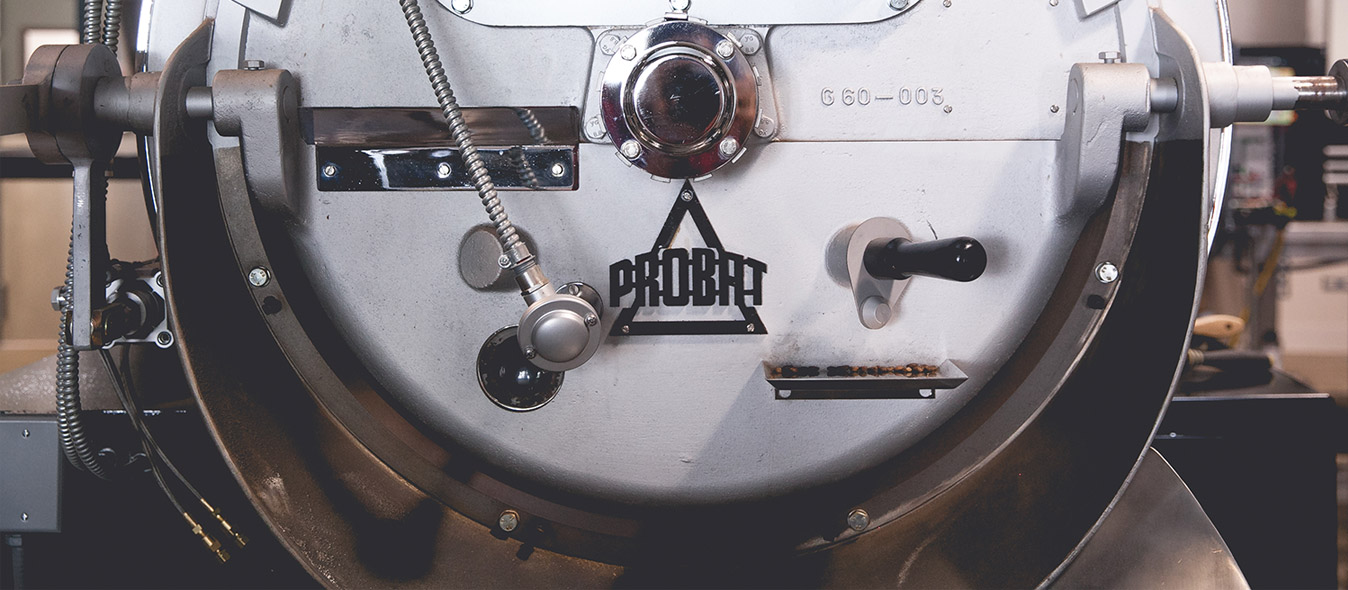
By all means.
Beans are super dense, it’s a wood-like material that’s incredibly solid. You can put a lot of energy into it, that’s why you have to have the heat up so high at first. It’s like pushing a car. You got a car that is in neutral, and if you try to push it uphill, it’s going to be really hard. If you push it downhill, it will be pretty easy. On a flat surface, you’re going to take a little get-and-going and then it’s going to coast. So you’re trying to create a situation where the coffee can move easily.
Some beans are grown at higher altitudes and are more dense because they mature more slowly on a tree at higher altitude. Some coffees that are grown at slightly lower altitude are softer, so you want to be a little more delicate with those at the beginning of the roast. There is a little bit of a drying-out phase that you do in order not to scorch the bean right away.
So we’ll charge the drum with the load and watch the heat equalize. After about a minute-and-a-half of that happening, I’ll put some flame on and bring it up to whatever the full temp is that I want for that moment. One thing we do to maintain consistency and quality while we’re roasting is to have a roast log that we fill out for every roast as we do it. This is accessible by our head roaster and our quality control head up in Portland, so we ship up samples of our roast up to them. They cup them and give us feedback. We will also exchange samples with the other markets—we have a roastery in Seattle, Brooklyn, and Portland. We’ll exchange same-day, same-roast with each other so we can make sure the brew you’re having here tastes like the one you would have in Portland. This and cupping your coffee is something that will make you an awesome roaster. Repetition, logging your data, tasting your roast, logging your thoughts on those roasts—that’s how you learn what happened.
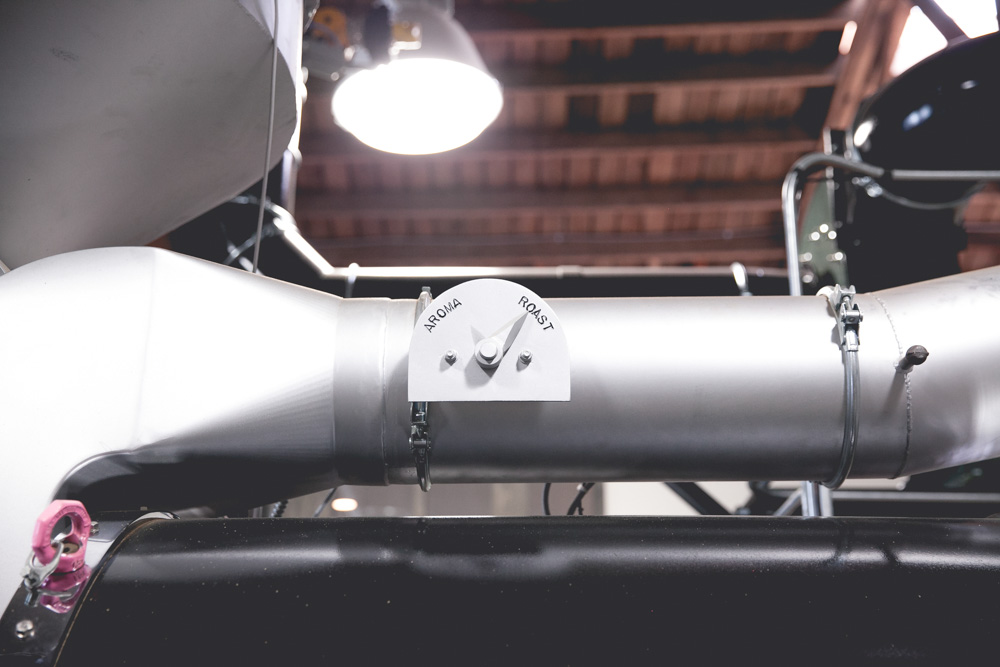
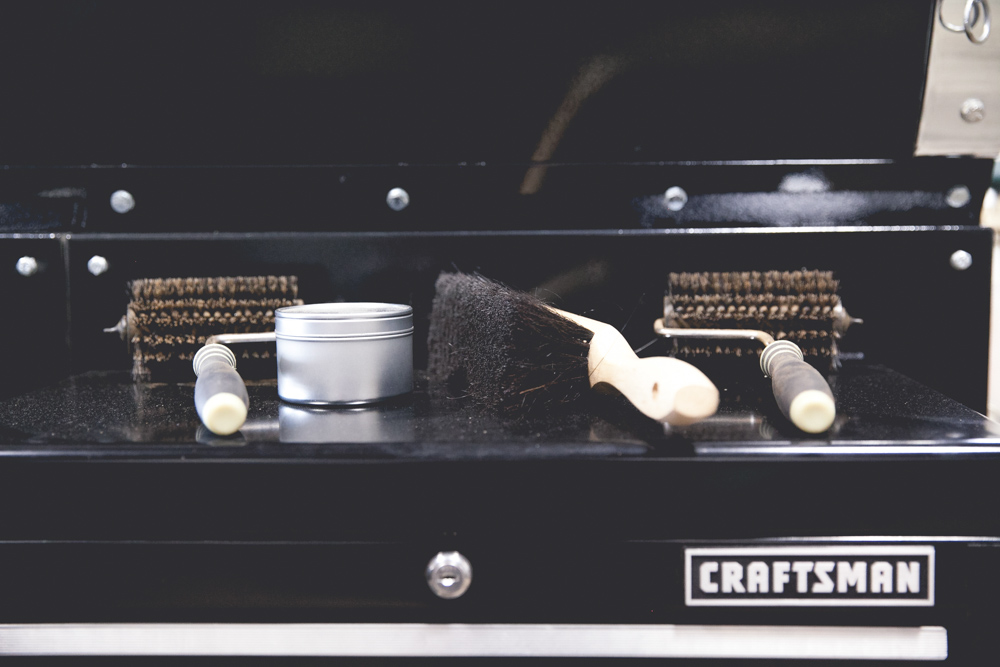
Anywhere from 11 to 15 minutes is a good end time [for roasting], and that depends on what coffee you’re doing and what you want it to taste like at the end. As you get to 6 minutes, you’re about 300 degrees—different machines are receiving slightly different temperatures, maybe because of the equipment or how it is set up, but technically, water vaporizes at the same temperature all of the time, depending on pressure. Just like popcorn, inside of each bean is a lot of bound up moisture. So what happens when popcorn warms up? The water vaporizes and then it wants to get out, so it pops. Similar kind of thing happens with coffee: we call it “first crack.” The entire mass starts cracking and you’re reaching a thing called exothermic heat where the beans themselves were endothermic and receiving heat, now they’re putting off energy and self-propelled. If you hit that point and you’re not ready for it, bad things can happen and ruin the batch. If you imagine, you’re giving full heat, and then it hits that point where it’s also self-perpetuating, it’s going to take off and you’re not in control anymore. Now you’re in damage control, you’re stomping on the brakes, trying to figure out what to do with this coffee, and then you dump it out. You didn’t roast the coffee, it roasted you.
You’re trying to be in control through this whole process. We stage back our flame, so that the energy it reaches, it’s enough to carry it on through and let the crack happen. Once the crack fizzles out, we’ll put more temp on it and let it come back up to where we want it to finish at. Second crack can happen, and anything that is like a dark roast which has probably gone through second crack. Second crack happens when the cell structure starts to break down and a lot of the sugars have already begun to caramelize, and you basically start cooking sugars down. We buy some of the cleanest, sweetest, most amazing coffees that are available, so we don’t do that, really. We don’t torch them because it will ruin it.
In order to tell that the crack is going to happen, you’ll notice a slight change in the aroma coming off the beans. So I grab the tryer (which you’re able to use to reach in and pull out a little bit of coffee from the roasting bean mass) so you can smell and look at it to see if the color is progressing appropriately. Part of the roasting process is understanding that you need good expansion in order to have great extraction. Previous to the crack happening, it’s smelling like grass, then hay, then this sweet-like grain fragrance, and then when it hits first crack, it starts to smell like coffee.
There is a bean probe thermometer in the front and it’s doing its best job to get the temperature of the inside of the bean. It’s set in a way where the bean mass hits it a lot as it’s rotating around in the drum. The other temperature is what we call “atmosphere” or “aroma” temperature. That’s the temperature of the air being blown around the drum and through the drum. I think of it as the potential energy of the coffee. You watch this temperature to see where the coffee might go.
Then we’ll open up the drum and pours out into a cooling tray. I think of this process as blanching. The concept of blanching is that it’s done and I want to stop the cooking now. There’s also a fan underneath, and when you dump the batch, the fan kicks on and it’s drawing air from the room into and through the coffee bean mass to cool it off as best as it can.
Afterwards, we dump it into the destoner. Coffee being a natural, agricultural product—just like your beans, rice, and lentils—they say “make sure to wash and sort” because you might end up chewing on a stone. You end up with the same type of situation.
Part of the roasting process is understanding that you need good expansion in order to have great extraction.
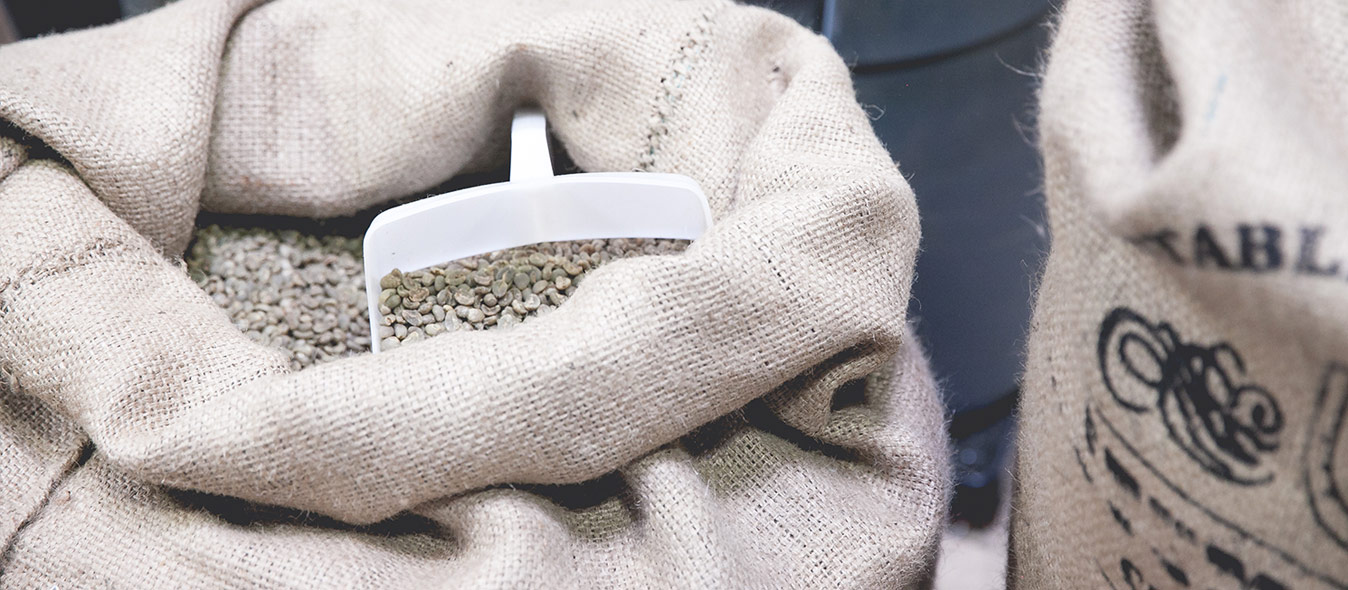
Do green and roasted beans weigh differently?
The rough idea is that you lose about 20% to water loss and chemical change. The longer the roast, the dryer it gets. Most people think of that as how dark the coffee is. Have you ever picked up a bag of french roast and wondered why it seemed like you were getting way more coffee? It’s because it’s less dense. The beans also swell up—which seems backwards—but as they lose weight and density, they grow and swell up.
How automated is the roasting process?
You can automate this completely but not on this machine. We have disabled the ability to automate some of it because we don’t do things that way. Environment has a huge impact on how a roast turns out. Day-to-day, things are going to change as you’re roasting the same batch of coffee, even if you’re doing everything the same. If the pressure is different outside or if the humidity is different, that coffee will respond differently from what you’re doing.
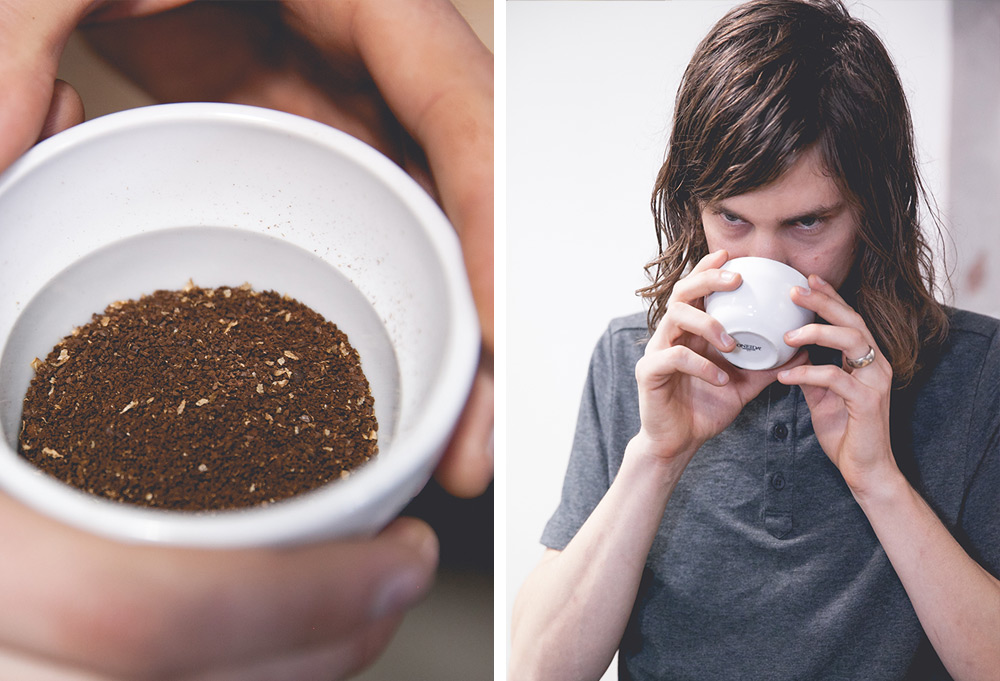
Walk us through a coffee cupping.
Within ten minutes of having ground coffee, a whole bunch of the aromatics that make up the great flavor of the coffee would have evaporated. That’s why we only talk about using fresh coffee—it’s super volatile. When we pour the water into the coffee, we steep it for four minutes. You don’t do any agitation, you just pour it in there. The grounds kind of float to the top and form what we call a “crust”. During that process, it’s basically infusing—the hot water is extracting the flavor.
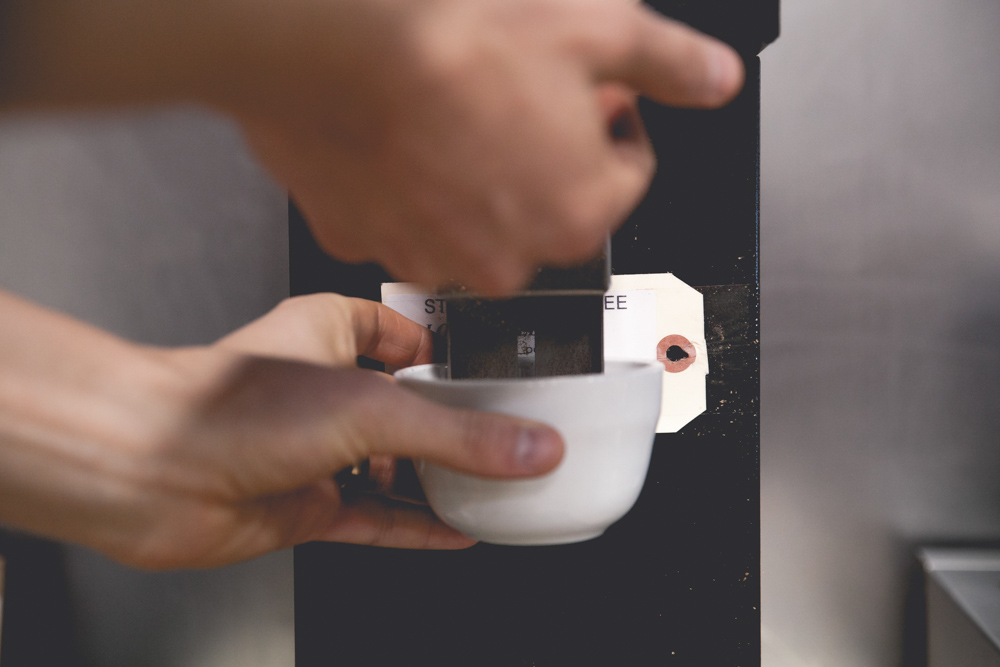
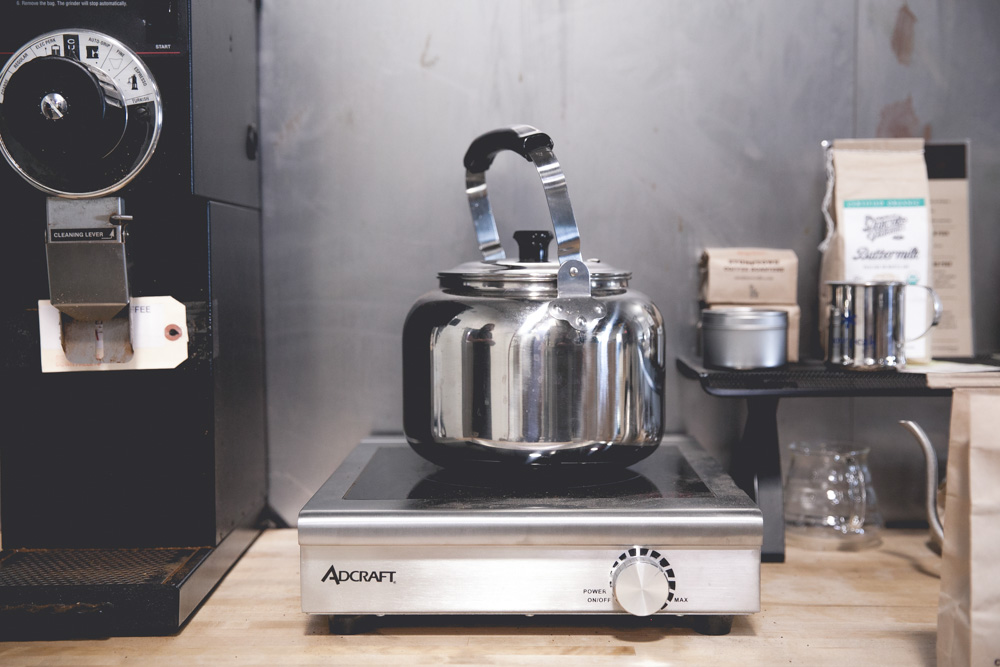
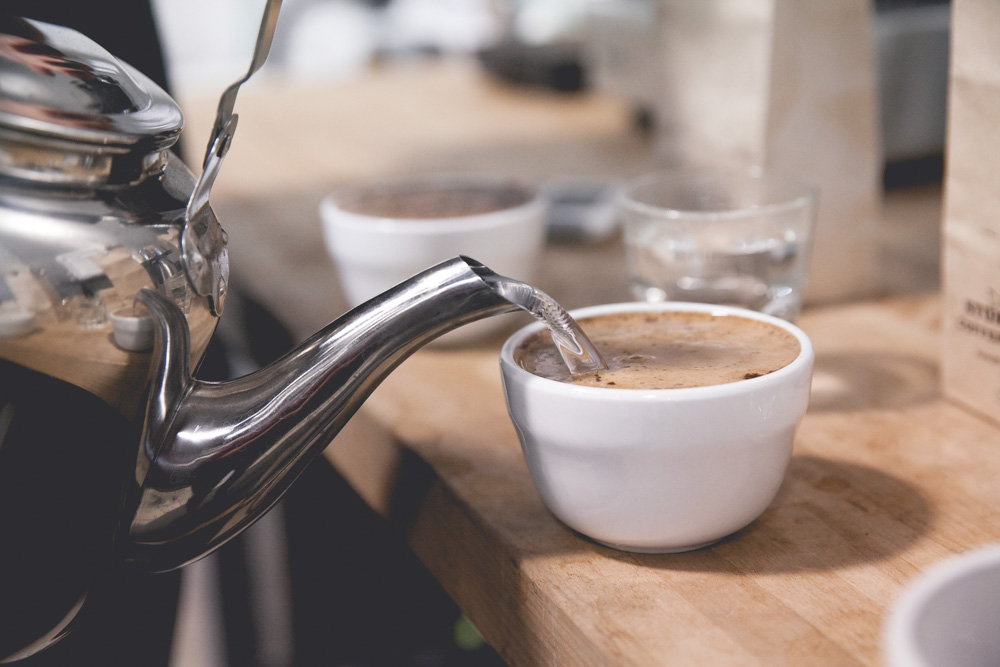
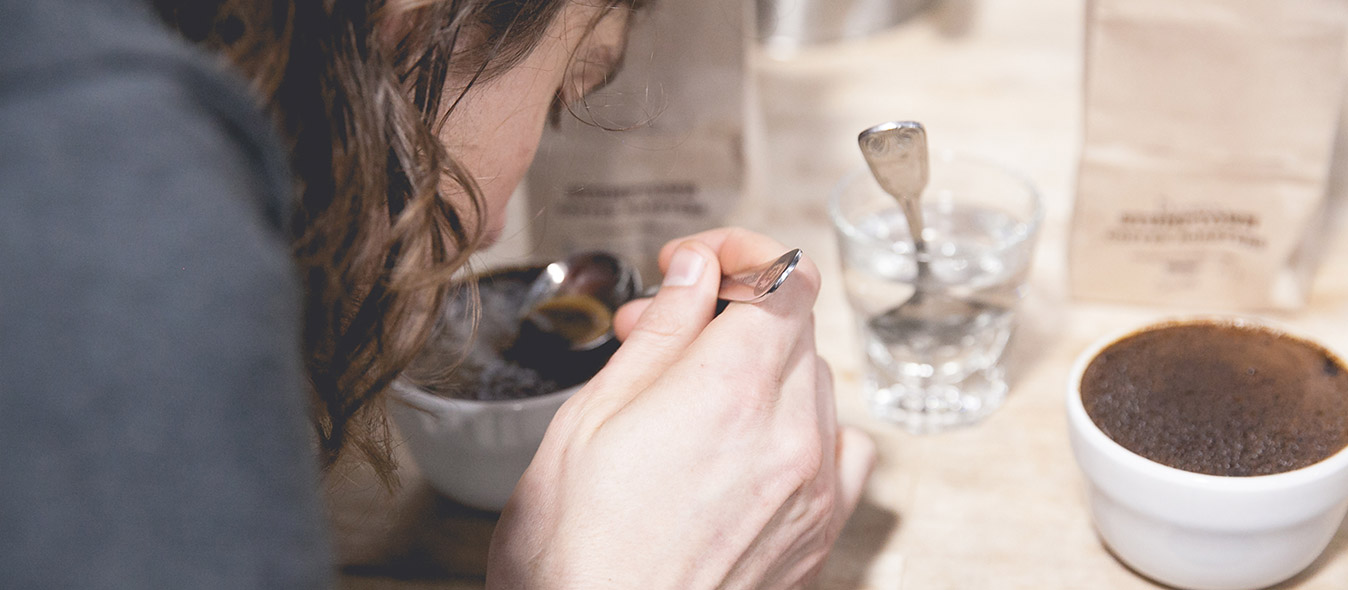
After it has been infused the way we want it to be, we do what is called “breaking the crust.” I will essentially push back the crust and stir it a bit. What I’m really looking for when I push back for that first time, I get a big release of the gases and delicate aromatics.
When you go to taste, it’s very similar to wine tasting: you are trying to spray the liquid all over the different parts of your tongue. I know that when you’re growing up everyone teaches you that it’s rude to slurp, but this is when it’s totally not rude to slurp and if you don’t slurp right, it’s wrong. You want to slurp it in a way where it’s hitting the point of your tongue, fanning out, and spraying all the rest of the parts of your tongue. You’re evaluating the acidity, the brightness, the feel in your mouth, and the sweetness of the coffee. When you spit it out, you’re evaluating aftertaste.
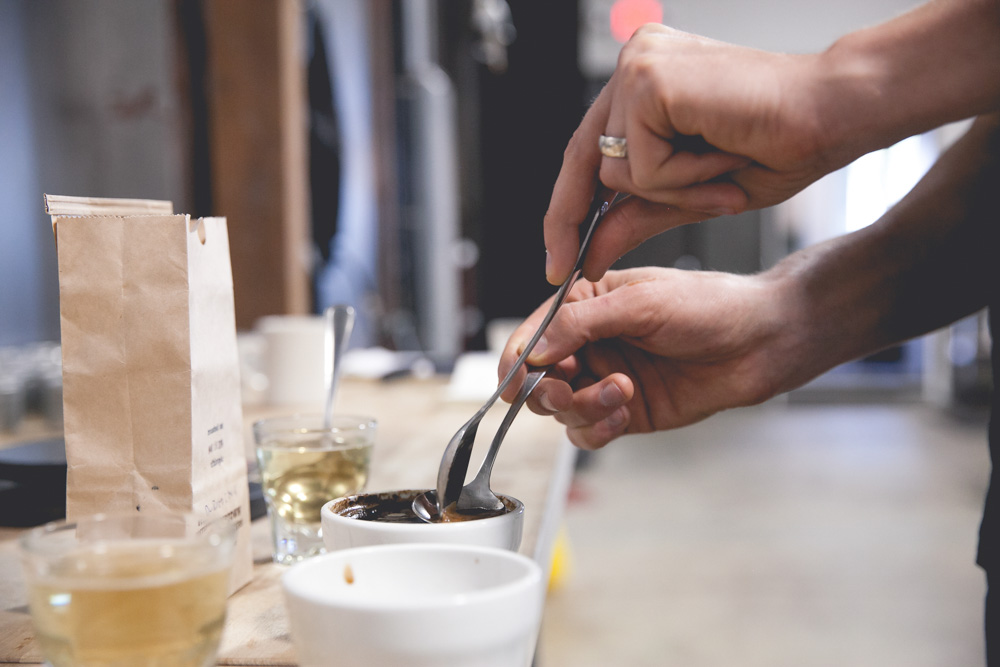
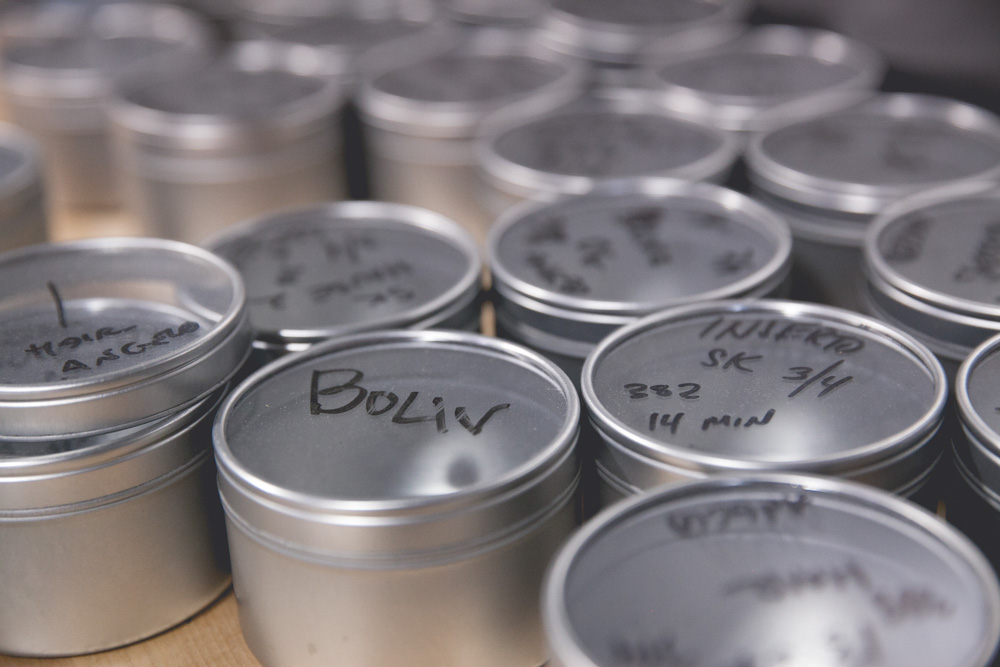
—
Stumptown Coffee Roasters
806 S SANTA FE LOS ANGELES, CA 90021





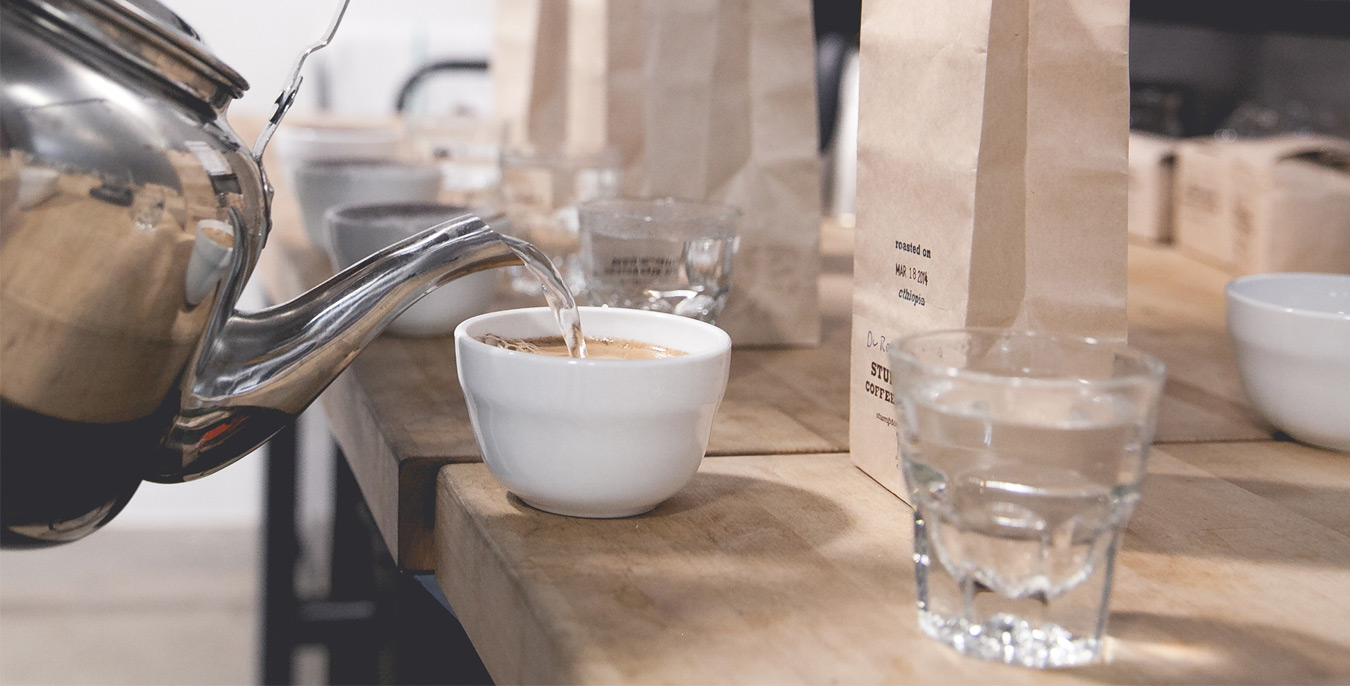

Our comments section is for members only.
Join today to gain exclusive access.